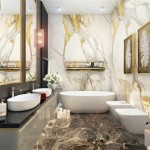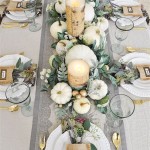Dark Green Bedroom Decorating Ideas
Dark green bedrooms evoke a sense of tranquility, sophistication, and connection to nature. This color, with its rich undertones and versatile hues, can transform a standard bedroom into a relaxing retreat. Successfully incorporating dark green requires careful consideration of various design elements, including paint shades, furniture choices, accent colors, and lighting schemes.
Dark green is not a monolithic color; it encompasses a spectrum from deep forest greens to muted olive tones. Each variation carries a unique mood and visual impact. The chosen shade will significantly influence the overall ambiance of the bedroom, affecting feelings of calmness, energy, or even drama.
Proper application of dark green in a bedroom setting demands a balanced approach. Overuse can create a claustrophobic or overwhelming atmosphere. Conversely, strategic placement can highlight architectural features, create depth, and provide a grounding element within the room. This article explores various techniques and considerations for effectively integrating dark green into bedroom decor, ensuring a harmonious and visually appealing space.
Selecting the Right Shade of Dark Green
The initial step in decorating with dark green involves selecting the most appropriate shade. Consider factors such as the room's size, natural light availability, and desired atmosphere. Smaller rooms with limited natural light generally benefit from lighter shades of dark green, such as sage or olive, which reflect more light and prevent the space from feeling confined. Larger bedrooms with ample natural light can accommodate deeper, more saturated greens like emerald or forest green. These darker hues can create a sense of intimacy and luxury.
When selecting a paint color, it's recommended to obtain sample swatches and observe them in the room under different lighting conditions throughout the day. Artificial lighting can significantly alter the appearance of paint colors, so it's crucial to assess how the chosen green looks both during the day and at night. Consider the undertones of the green, as well. Some greens have warm undertones, leaning towards yellow or brown, while others have cool undertones, with hints of blue or gray. The undertones will influence how the green interacts with other colors in the room.
In addition to paint, consider other ways to introduce dark green into the bedroom. Wallpaper with a dark green pattern can add texture and visual interest. Fabric headboards, bedding, or curtains in dark green can provide a softer, more subtle approach to incorporating the color. The key is to ensure that the chosen shade complements the existing architectural features and desired style of the bedroom.
Ultimately, the right shade of dark green relies on personal preference and the specific characteristics of the bedroom. Experimenting with different shades and considering the overall design scheme will lead to a harmonious and aesthetically pleasing result. The objective is to create a space that feels both inviting and reflective of one's individual style.
Complementary Colors and Textures for Dark Green
Dark green serves as a versatile backdrop that can be enhanced by a range of complementary colors and textures. Pairing dark green with the right accents is crucial for achieving a balanced and visually appealing bedroom design. Consider incorporating natural elements, metallic accents, and contrasting hues to create depth and interest.
Natural wood tones, such as walnut, oak, or maple, complement dark green beautifully. Wood furniture with warm undertones adds a sense of warmth and organic texture to the space. Consider a wooden bed frame, nightstands, or dressers to create a cohesive and inviting atmosphere. Rattan or wicker accents can also add a natural, bohemian touch.
Metallic accents, such as gold, brass, or copper, can add a touch of luxury and sophistication to a dark green bedroom. Incorporate these metals through lighting fixtures, hardware, picture frames, or decorative accessories. The warm tones of these metals contrast beautifully with the cool tones of dark green, creating a visually striking effect.
White or off-white accents can provide a crisp and clean contrast to dark green. White bedding, curtains, or trim can brighten the room and prevent it from feeling too dark or heavy. Consider incorporating white through the use of textured fabrics, such as linen or cotton, to add depth and visual interest. Cream or ivory can provide a softer, more subtle contrast for a warmer, more inviting feel.
Other complementary colors to consider include shades of blush pink, mustard yellow, and deep teal. Blush pink adds a feminine and romantic touch, while mustard yellow provides a vibrant and energetic contrast. Deep teal can create a harmonious and sophisticated color palette. When incorporating these colors, use them sparingly as accent colors through throw pillows, blankets, or artwork to avoid overwhelming the space.
Textures play a vital role in creating visual interest and depth in a dark green bedroom. Consider incorporating a variety of textures through the use of different fabrics, materials, and finishes. A velvet headboard, a knitted throw blanket, or a textured rug can add tactile appeal and create a more inviting space. Layering different textures will enhance the overall sense of comfort and luxury.
Successfully combining complementary colors and textures is essential for creating a well-balanced and visually appealing dark green bedroom. Experiment with different combinations to find what works best for one's personal style and the specific characteristics of the room. The objective is to create a space that feels both cohesive and visually stimulating.
Lighting Considerations for Dark Green Bedrooms
Lighting is paramount in any bedroom design, but it's especially crucial when working with dark colors like dark green. Dark shades absorb more light, so proper lighting is essential to prevent the room from feeling dim or gloomy. A well-planned lighting scheme should incorporate a variety of light sources to create a balanced and inviting atmosphere. Consider ambient lighting, task lighting, and accent lighting to achieve optimal illumination.
Ambient lighting provides overall illumination to the room. This can be achieved through a ceiling fixture, chandelier, or recessed lighting. For a dark green bedroom, consider a fixture that emits a warm, diffused light to prevent harsh shadows and create a cozy atmosphere. A dimmer switch can provide flexibility in adjusting the light level to suit different moods and activities.
Task lighting provides focused light for specific activities, such as reading or working. Bedside lamps are essential for providing task lighting in a bedroom. Choose lamps that direct light downwards and have adjustable arms or shades for optimal positioning. Task lighting can also be incorporated through desk lamps or floor lamps if the bedroom includes a workspace.
Accent lighting highlights specific features or architectural details in the room. This can be achieved through artwork lighting, spotlights, or wall sconces. Accent lighting adds depth and visual interest to the space. Consider using accent lighting to highlight a textured wall, a piece of artwork, or a decorative architectural feature. The use of strategic accent lighting can elevate the aesthetic appeal of the room.
In addition to the type of lighting, the color temperature of the light bulbs is also important. Warm white light bulbs (2700-3000K) create a cozy and inviting atmosphere, while cool white light bulbs (3500-4100K) provide a brighter and more energizing light. For a dark green bedroom, warm white light bulbs are generally preferred to create a relaxing and tranquil ambiance. However, consider using cooler white light bulbs for task lighting if needed.
Natural light is also a crucial element to consider. Maximize natural light by keeping windows clean and unobstructed. Consider using sheer curtains or blinds that allow natural light to filter through while providing privacy. Mirrors can also be strategically placed to reflect natural light and brighten the room.
A well-planned lighting scheme can significantly enhance the beauty and functionality of a dark green bedroom. By incorporating a variety of light sources, considering the color temperature of the light bulbs, and maximizing natural light, one can create a space that is both visually appealing and comfortable. The objective is to create a balance between illumination and ambiance, ensuring that the dark green decor is showcased in its optimal light.

Dark Green Bedroom Inspiration The Sweetest Digs

Dark Green Bedroom Inspiration The Sweetest Digs

Dark Green Bedroom Ideas Decorating Design Corral Room Decor Walls

Dark Green Bedroom Ideas Decorating Design Corral Home Decor Walls

10 Emerald Green Bedroom Ideas Sugar Cloth

15 Green Bedrooms Ideas To Fall In Love With

79 Soothing Green Bedroom Decor Ideas Shelterness

Dark Green Bedroom Inspiration The Sweetest Digs
:max_bytes(150000):strip_icc()/Rebecca-Shehorn_Photography_Miranda-Schroeder-106-682x1024-573989c0cb65408ab166d269215534db-7f12a1befcbc4b649bfc3229f2701ec9.jpg?strip=all)
35 Gorgeous Green Bedrooms That Prove The Hue Is A Classic

15 Green Bedrooms Ideas To Fall In Love With
Related Posts







